10 Marine Species That Thrive By Feeding Off Each Other
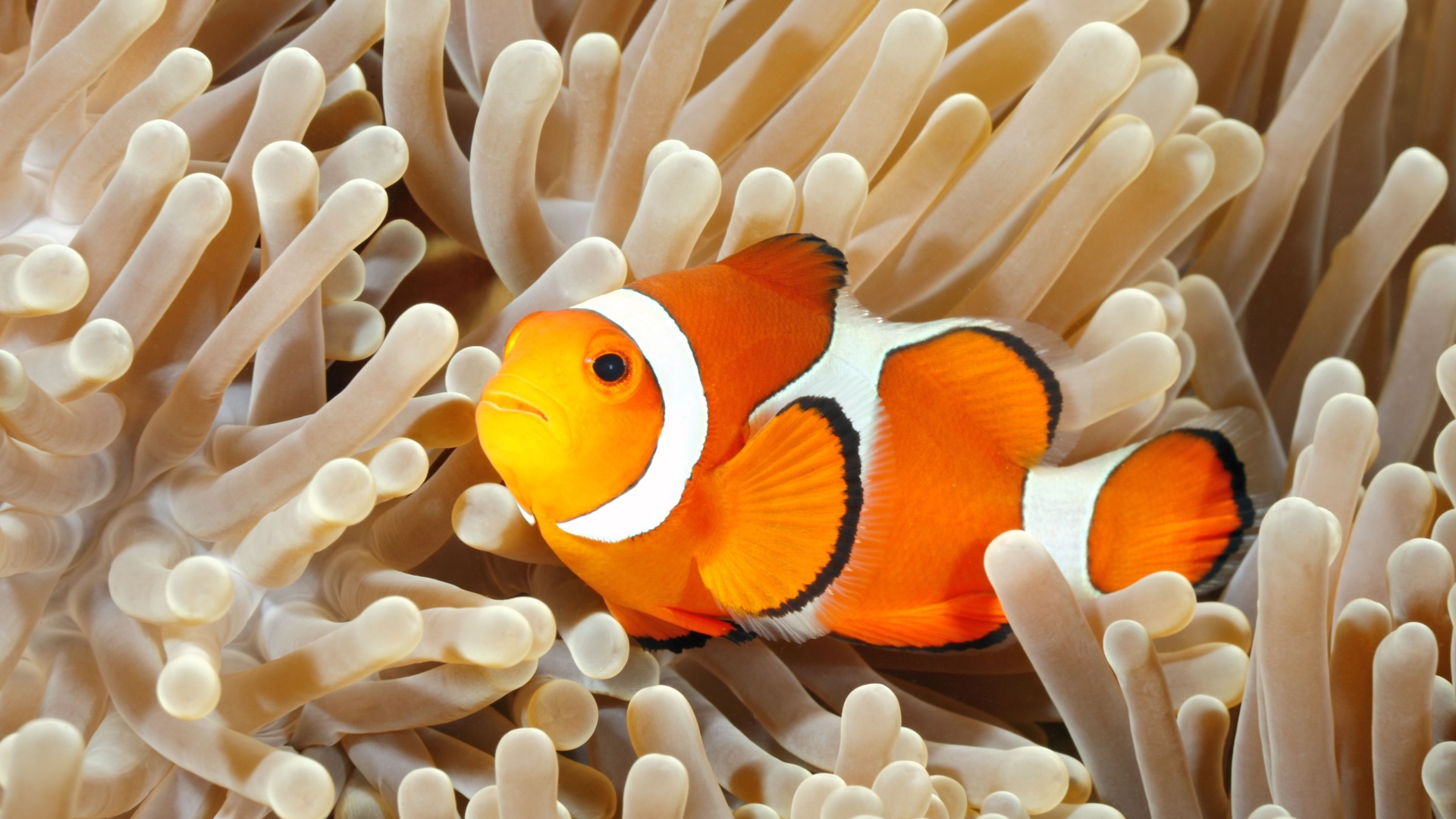
In the vast oceans, certain marine species have perfected the art of teamwork, thriving together through mutualistic relationships.
These underwater partnerships showcase the incredible adaptability and cooperation among sea creatures, offering a glimpse into the complex interactions that sustain marine ecosystems.
From tiny fish to massive mammals, these species demonstrate the beauty of nature’s interconnectedness.
1. Clownfish And Sea Anemone
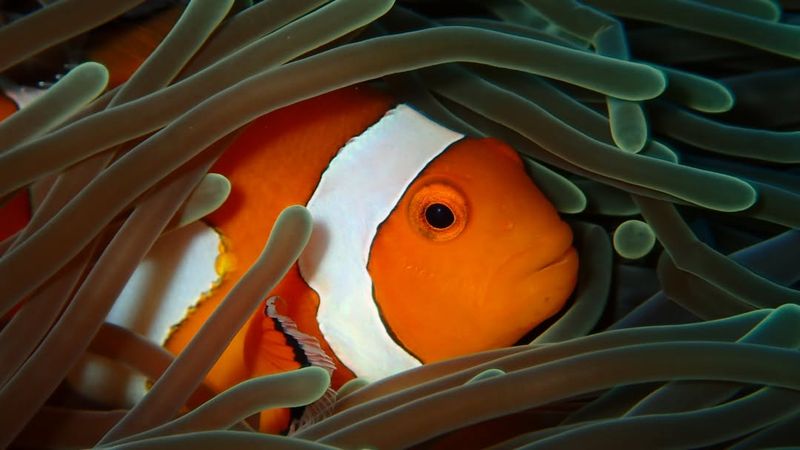
The clownfish finds a safe haven nestled among the tentacles of the sea anemone, protected from potential threats. Immune to the anemone’s sting, these brightly colored fish make ideal tenants, thriving in this symbiotic relationship.
In exchange, the clownfish offer protection by fending off predators that may target the anemone. The anemone benefits from the nutrients provided by the clownfish’s waste, which helps fuel its growth.
This mutualistic relationship highlights nature’s delicate balance, where both species thrive through cooperation.
2. Cleaner Wrasse And Parrotfish
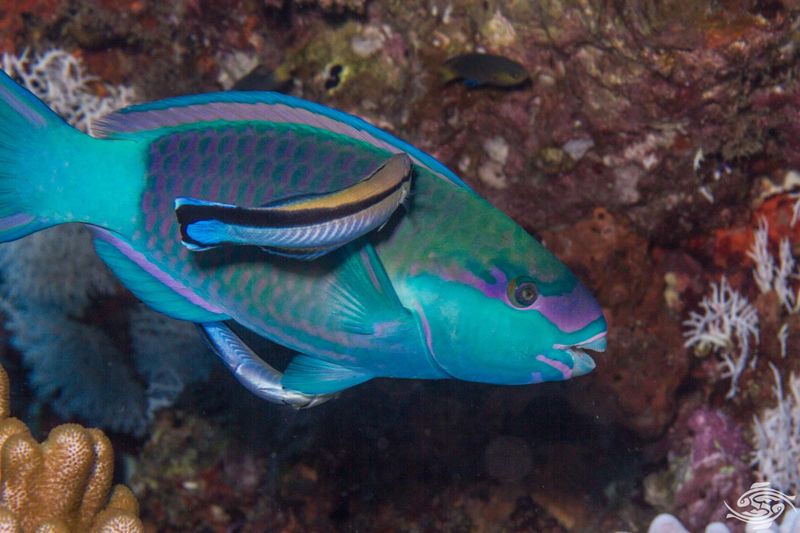
Imagine a spa day in the ocean! Parrotfish enjoy this experience when they visit cleaner wrasses, who diligently nibble away at parasites and excess skin, keeping the parrotfish healthy.
In return, the cleaner wrasse gets a tasty and nutritious meal. This symbiotic relationship benefits both species, contributing to the health and vibrancy of the reef ecosystem.
It’s a perfect example of mutual care, where grooming and nourishment work hand in hand to maintain harmony underwater.
3. Remora And Shark
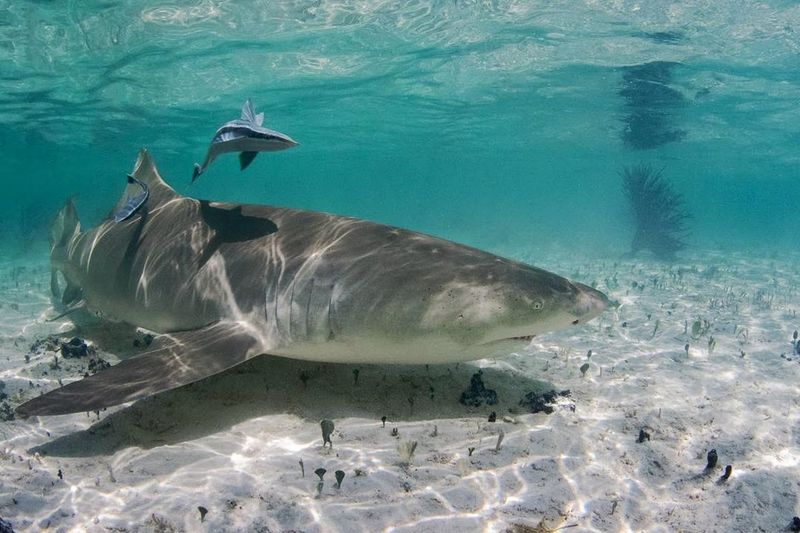
Hitching a ride on the shark, the remora enjoys several benefits. It gets free transportation across the ocean, saving energy, while also feasting on scraps from the shark’s meals.
In exchange, the remora helps keep the shark clean by eating away dead skin and parasites. This mutual relationship helps the shark stay healthy and the remora thrive with minimal effort.
Their partnership is a perfect example of nature’s efficiency and mutual support.
4. Gobies And Shrimp
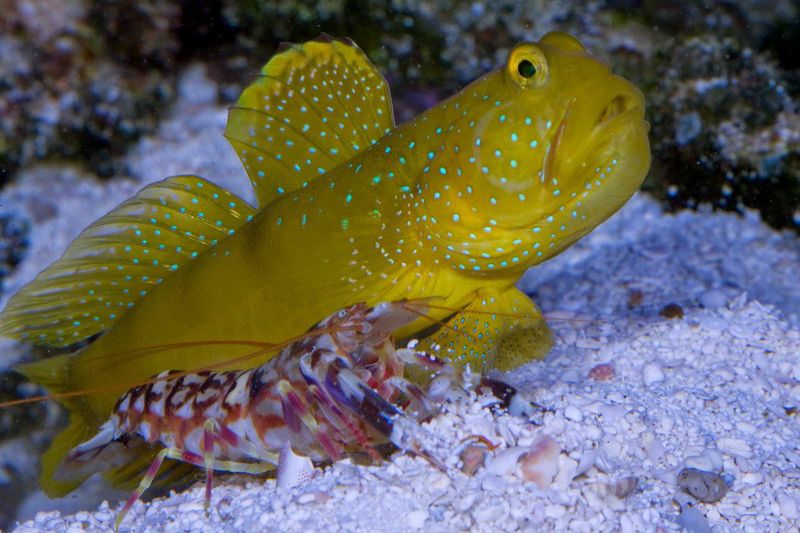
The goby and shrimp make an unlikely but effective team. While the shrimp digs and maintains a burrow, the goby stands guard. Whenever danger approaches, the goby darts into the burrow, signaling the shrimp.
This partnership offers protection and a cozy home for both. The goby enjoys a safe haven, while the shrimp benefits from the goby’s watchful eyes.
Together, they thrive in the often-dangerous ocean floors.
5. Giant Moray Eel And Grouper Fish
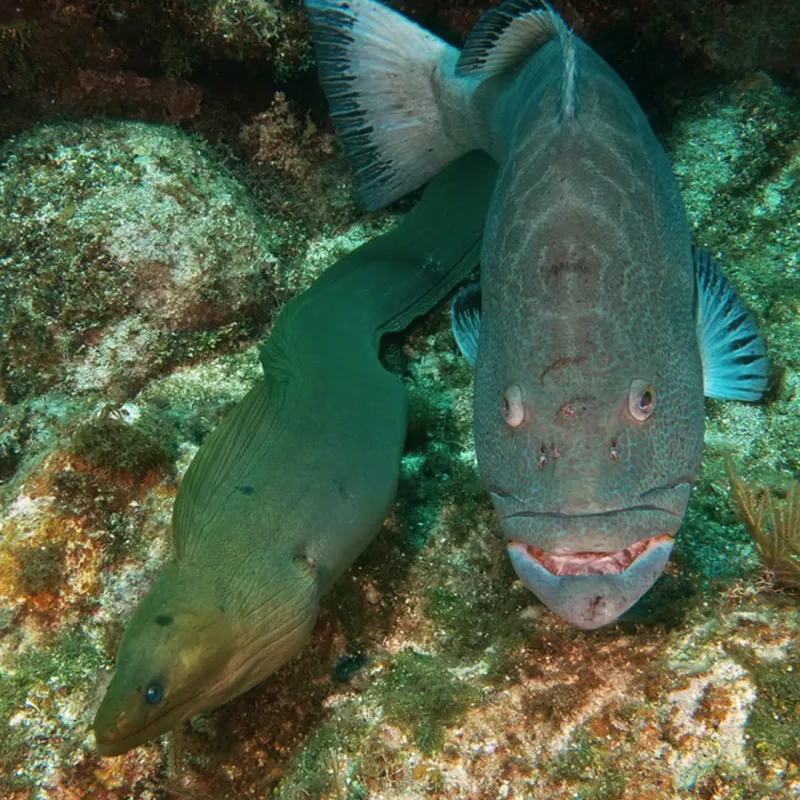
In the ocean’s depths, the moray eel and grouper fish form a formidable hunting team. The eel slithers into crevices, flushing prey into the open, where the grouper eagerly awaits.
This hunting collaboration ensures a bountiful catch for both. The moray benefits from the grouper’s strength, while the grouper enjoys the eel’s ability to reach hidden spots.
Such teamwork highlights the strategic alliances formed in nature, ensuring survival in competitive environments.
6. Coral And Zooxanthellae
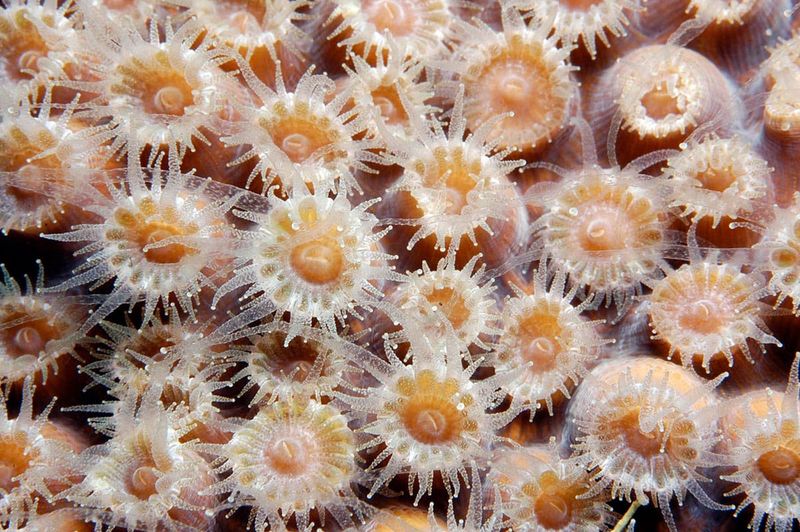
In a vibrant dance of life, coral and zooxanthellae form an inseparable bond. These microalgae live within coral tissues, photosynthesizing sunlight into energy.
Zooxanthellae provide coral with essential nutrients, while coral offers protection and carbon dioxide. This relationship fuels the growth of entire reef ecosystems, showcasing nature’s brilliance in mutual cooperation.
The survival of these species depends heavily on each other, highlighting their intertwined destinies.
7. Sea Turtles And Fish
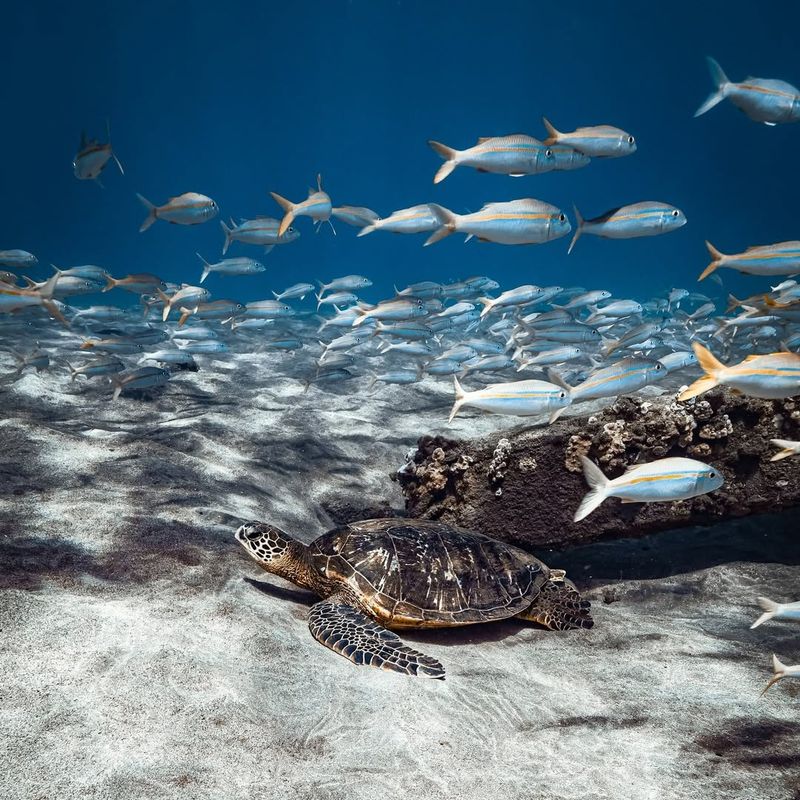
Sea turtles and cleaner fish form a beneficial relationship beneath the waves. These fish nibble away algae and parasites, ensuring the turtle’s shell remains healthy.
In exchange, the fish enjoy a nutritious meal and a safe environment. This alliance promotes health for the turtles while providing sustenance for the fish, illustrating marine ecosystem interdependence.
It’s a classic example of how marine species rely on each other for survival.
8. Barnacles And Whales
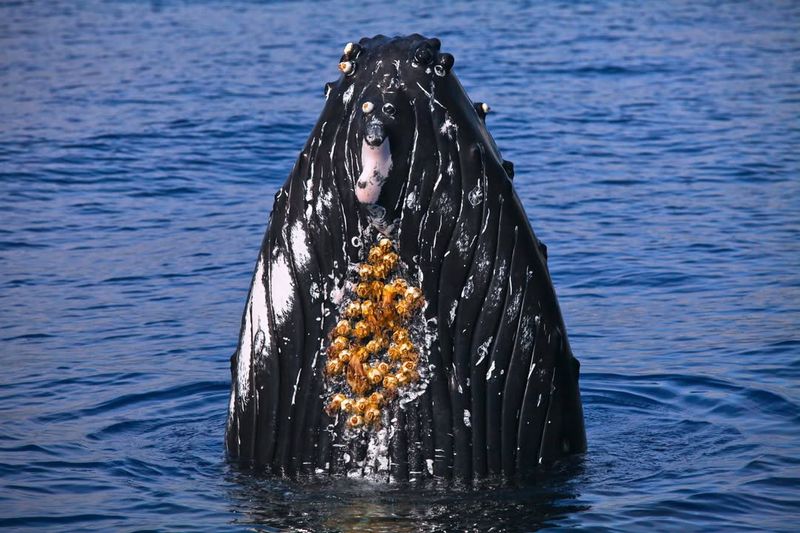
The relationship between barnacles and whales is both fascinating and beneficial. Barnacles attach to whales, gaining a free ride across oceans.
They filter-feed on plankton as the whale swims, ensuring their sustenance. Meanwhile, whales remain unaffected by their presence.
This passive relationship supports barnacle survival without hindering the whale, exemplifying how species coexist harmoniously.
9. Sea Cucumbers And Pearlfish
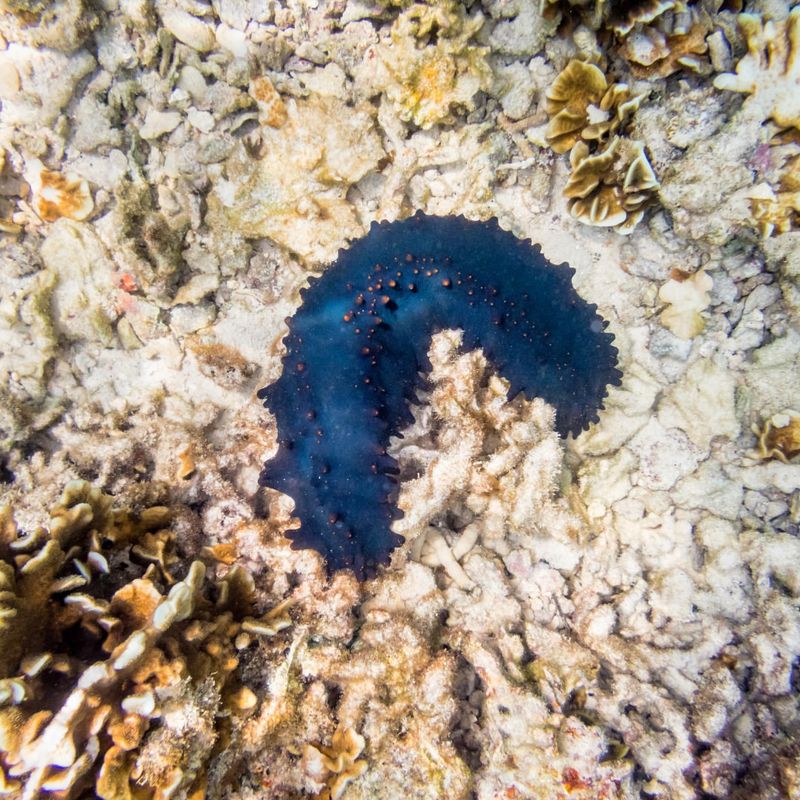
In the ocean’s depths, pearlfish find shelter inside sea cucumbers’ bodies. This unusual habitat offers protection from predators.
Sea cucumbers benefit from the cleaning services pearlfish provide, removing parasites. Such symbiotic relationships reflect the resourcefulness and adaptability of marine species.
It’s a testament to nature’s ingenuity in fostering survival through collaboration.
10. Pilot Fish And Sharks
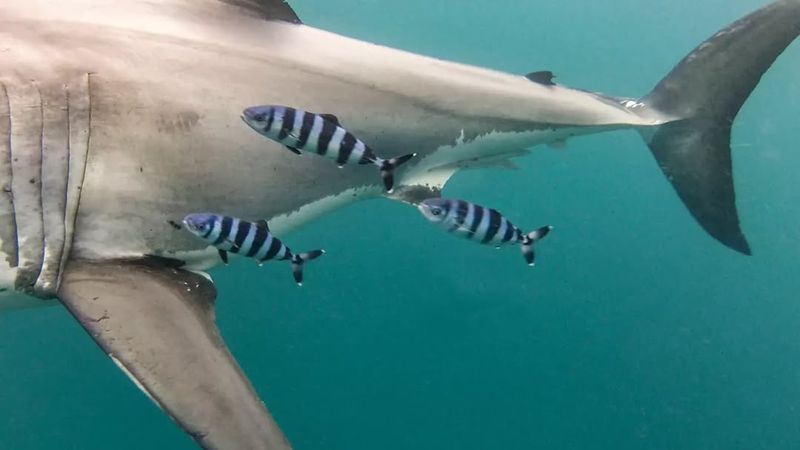
Pilot fish and sharks share an intriguing alliance. Pilot fish swim alongside sharks, feeding on leftovers and parasites.
This arrangement keeps the shark’s skin clean, while pilot fish enjoy protection from predators due to their association with the formidable sharks.
Their partnership highlights the strategic use of alliances for survival and cleanliness in the marine world.
